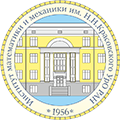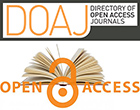ATTRACTION SETS IN ATTAINABILITY PROBLEMS WITH ASYMPTOTIC-TYPE CONSTRAINTS
Abstract
In control theory, the problem of constructing and investigating attainability domains is very important. However, under perturbations of constraints, this problem lacks stability. It is useful to single out the case when the constraints are relaxed. In this case, greater opportunities arise in terms of attainability, and often a useful effect can be observed even under slight relaxation of the constraints. This situation is analogous to the duality gap in convex programming. Very often, it is not possible to specify in advance how much relaxation of the constraints will occur. Therefore, attention is focused on the limit of the attainability domains under unrestricted tightening of the relaxed conditions. As a result, a certain attainability problem with asymptotic-type constraints arises. This problem formulation can be significantly generalized. Namely, we do not consider any unperturbed conditions at all and instead pose asymptotic-type constraints directly by means of a nonempty family of sets in the space of ordinary controls. Moreover, not only the case of control problems can be considered. In this general formulation, an analogue of the limit of attainability domains naturally appears as the relaxed conditions are infinitely tightened. For asymptotic constraints of this kind, we introduce solutions which are, at the conceptual level, similar to the approximate solutions of J.Warga, but we use filters or directedness, and not just sequences of ordinary solutions (controls). We investigate the most general attainability problem, in which asymptotic-type constraints can be generated by any nonempty family of sets in the ordinary solution space. It is shown, however, that the most practically interesting case is realized by filters, and the role of ultrafilters is noted as well. The action of constraints is associated with sets and elements of attraction. Furthermore, some properties of the family of all attraction sets are investigated.
Keywords
Full Text:
PDFReferences
- Bourbaki N. Obshchaya topologiya: Osnovnye struktury [General Topology: Basic Structures]. Moscow: Nauka, 1968. 272 p. (in Russian)
- Chentsov A.G. Finitely Additive Measures and Relaxations of Extremal Problems. New York: Springer, 1996. 244 p.
- Chentsov A.G. Asymptotic Attainability. Dordrecht: Springer, 1997. 322 p. DOI: 10.1007/978-94-017-0805-0
- Chentsov A.G. Ul’trafil’try i maksimal’nye sceplennye sistemy mnozhestv [Ultrafilters and Maximal Linked Systems of Sets]. Moscow: Lenand, 2024. 416 p. (in Russian)
- Chentsov A.G. Closed mappings and construction of extension models. Proc. Steklov Inst. Math., 2023. Vol. 323, No. Suppl. 1. P. S56–S77. DOI: 10.1134/S0081543823060056
- Chentsov A.G., Morina S.I. Extensions and Relaxations. Dordrecht: Springer, 2002. 408 p. DOI: 10.1007/978-94-017-1527-0
- Dykhta V.A., Samsonyuk O.N. Optimal’noe impul’snoe upravlenie s prilozheniyami [Optimal impulse control with applications]. Moscow: Fizmatlit, 2003. 256 p. (in Russian)
- Engelking R. Obshchaya topologiya [General Topology]. Moscow: Mir, 1986. 752 p. (in Russian)
- Gamkrelidze R.V. Osnovy teorii optimal’nogo upravleniya. [Foundations of Optimal Control Theory]. Tbilisi: Izdat. Tbilisi Univ., 1977. 253 p. (in Russian)
- Khalanay A., Veksler D. Kachestvennaya teoriya impul’snyh sistem [Qualitative Theory of Impulse Systems]. Moscow: Mir, 1971. 312 p.
- Krasovskii N.N., Subbotin A.I. Game-Theoretical Control Problems. New York: Springer–Verlag, 1988. 517 p.
- Krasovskii N.N., Subbotin A.I. An alternative for the game problem of convergence. J. Appl. Math. Mech., 1971. Vol. 34, No. 6. P. 948–965. DOI: 10.1016/0021-8928(70)90158-9
- Krasovskii N.N. Teoriya upravleniya dvizheniem [Theory of Control of Motion]. Moscow: Nauka, 1968. 476 p. (in Russian)
- Kuratowski K., Mostowski A. Set Theory, with an Introduction to Descriptive Set Theory. Amsterdam: North-Holland Publ. Co., 1967. 514 p.
- Miller B.M., Rubinovich E.Ya. Optimizaciya dinamicheskih sistem s impul’snym upravleniem [Optimization of Dynamic Systems with Impulse Controls]. Moscow: Nauka. 2005. 430 p.
- Samoilenko AM., Perestyuk N.A. Differencial’nye uravneniya s impul’snym vozdejstviem [Differential Equations with Impulse Action]. Kiev: Vysshaya shkola, 1987. 288 p. (in Russian)
- Warga J. Optimal Control of Differential and Functional Equations. NY, London: Academic Press, 1972. 531 p. DOI: 10.1016/C2013-0-11669-8
- Young L.C. Lectures on the Calculus of Variations and Optimal Control Theory. Philadelphia, London, Toronto: Saunders, 1969. 331 p.
- Zavalishchin S.T., Sesekin A.N. Impul’snye processy. Modeli i prilozheniya [Impulse Processes. Models and Applications]. Moscow: Nauka, 1991. 256 p. (in Russian)
Article Metrics
Refbacks
- There are currently no refbacks.













